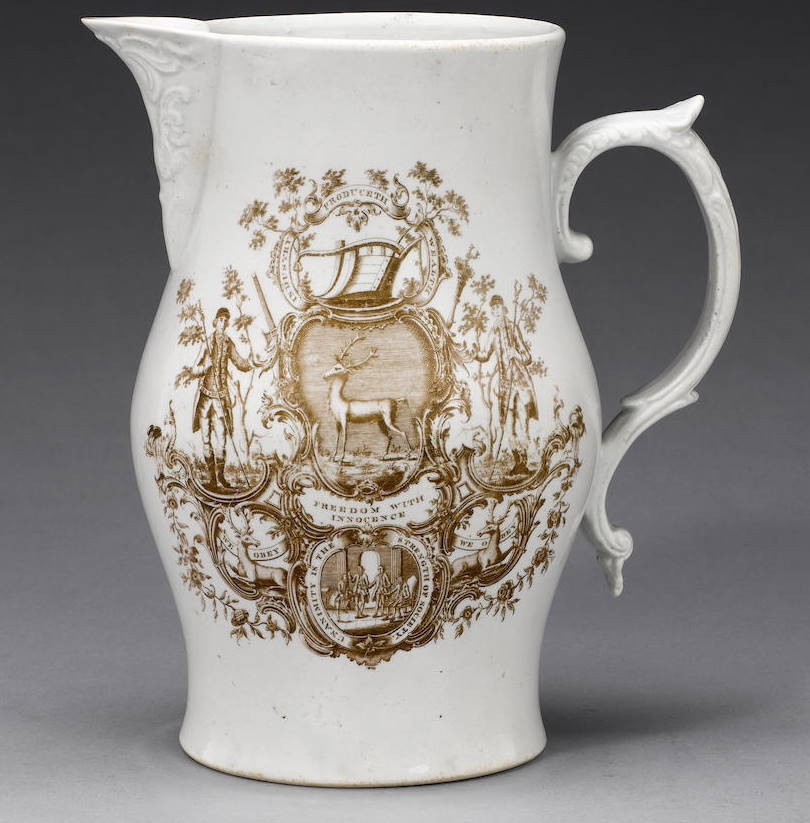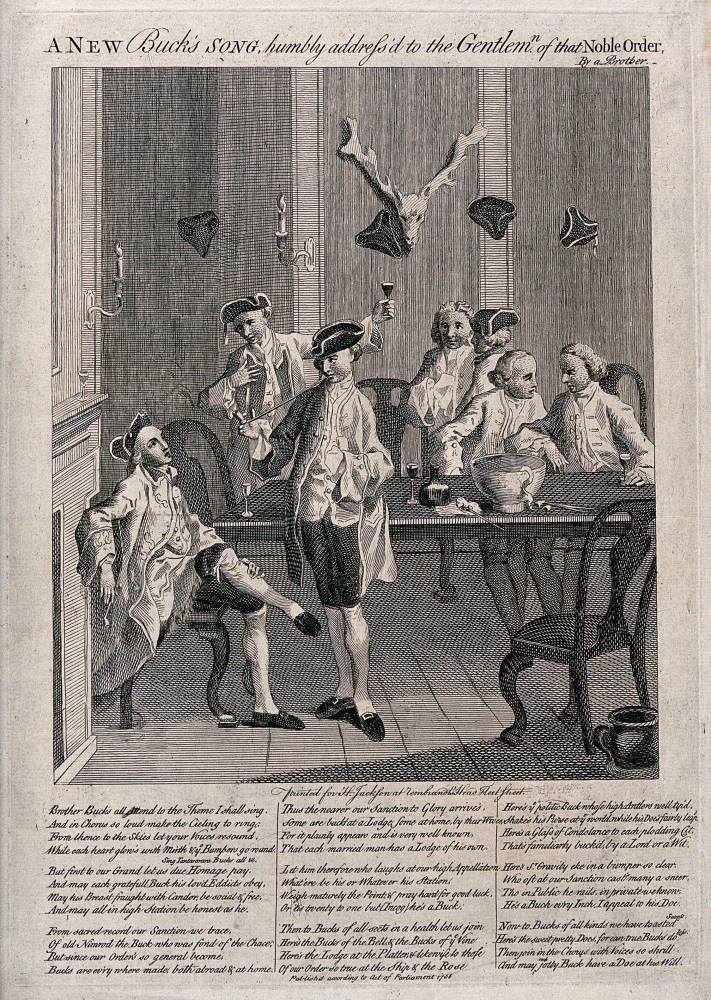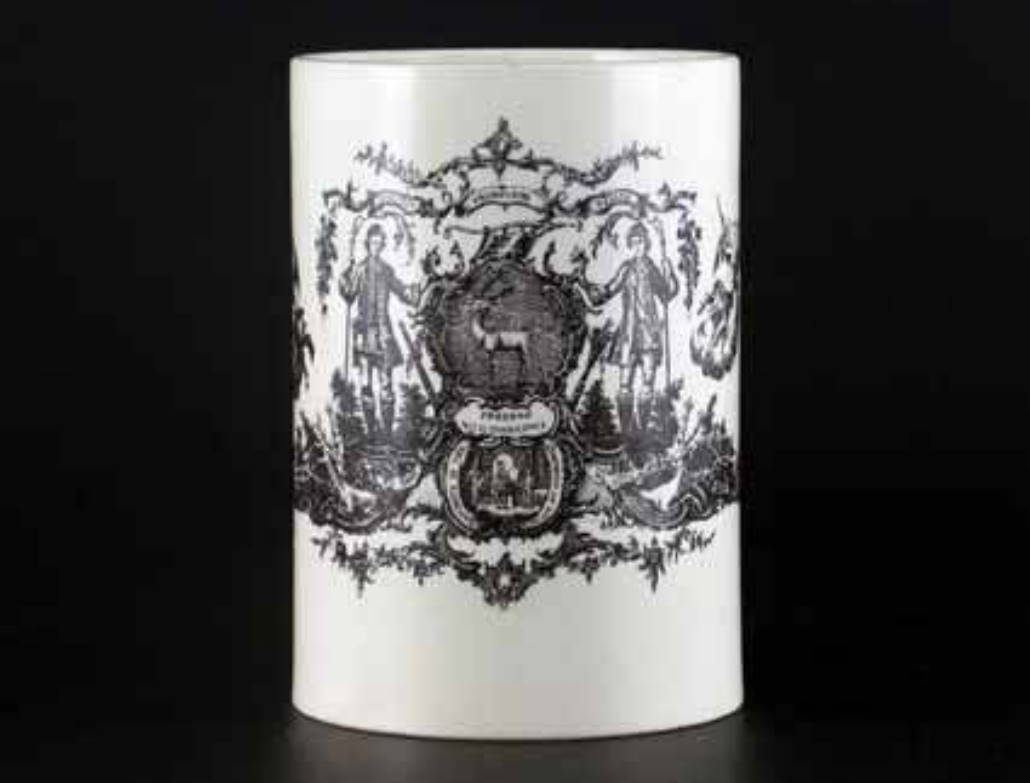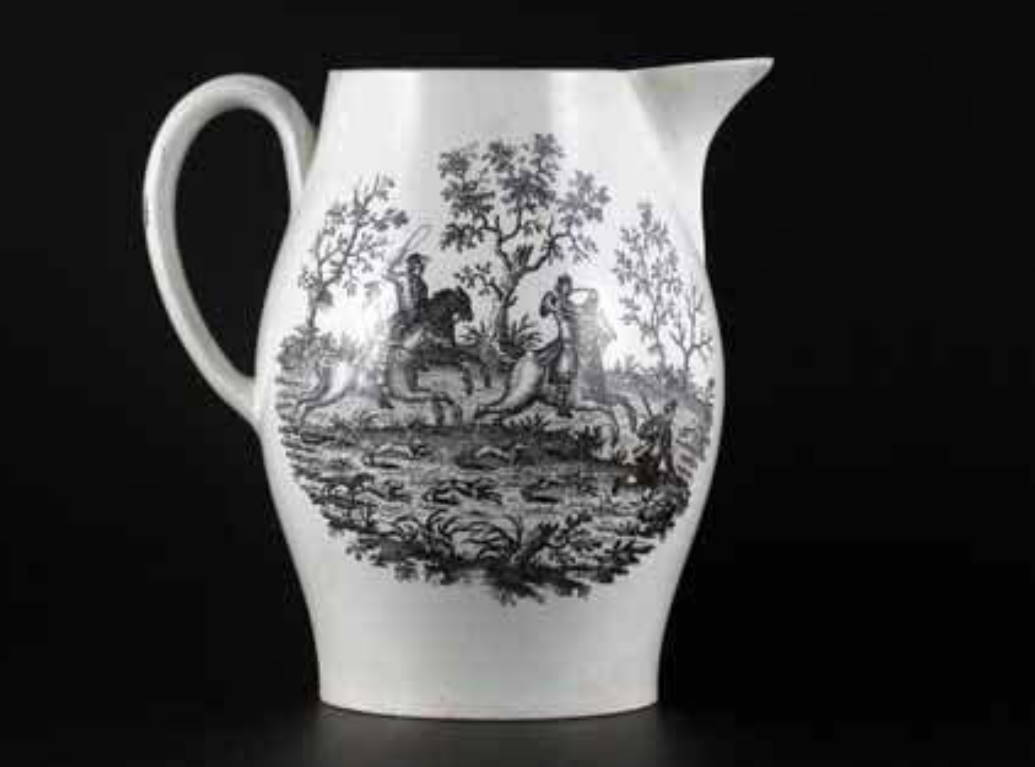The tapestry of secret societies weaves a captivating story, touching every corner of human civilization. While Freemasonry often stands as the poster child of such movements, especially due to its enduring legacy, the annals of history contain whispers of other notable societies. One such society is the Antient and Noble Order of the Bucks, which, in its heyday, stood as a significant rival to Freemasonry in Great Britain. We take a look at the Order of the Bucks including a brief history and a look at the few objects that relate to the society.

Although the Order of the Bucks anchored its lineage in the ancient tales of Nimrod, a Mesopotamian king mentioned in various Biblical narratives, its activities in the real world diverged from such lofty origins. Beginning its journey in the 1720s and persisting through the 1820s, the society, in reality, was more akin to a gentlemen’s drinking club than a sober religious or philosophical congregation. The 1760s and 1770s marked the zenith of its influence, characterised by boisterous gatherings, where rowdy parties were the norm rather than the exception.

Mottos and Principles
Unanimity is the Strength of Society
At the core of the Order’s identity is a profound motto: ‘Unanimity is the Strength of Society’. This isn’t just a catchphrase, but a guiding principle that encapsulated their spirit of fraternity, unity, and mutual upliftment. This early 19th-century society prioritized convivial gatherings, emphasizing the essence of brotherhood and the shared joy among its members.

The society’s reputation for wild revelry wasn’t always viewed favorably, even by its members. A notable instance from the 1770s captures this sentiment. A member known only as “Hurle,” disillusioned by the behavior he witnessed, distanced himself from the Bucks. In 1781, channeling his disdain for the uncouth conduct of his former brethren, Hurle established the Ancient Order of Druids. This new fraternal order enshrined values that seemed a direct response to the excesses of the Bucks; it explicitly prohibited its members from indulging in profanity or engaging in political discourse.
Tokens of Affiliation
Distinct from the Freemasons, who predominantly opted for metal badges, the Bucks exhibited an affinity for ceramic tokens. These were often transfer-printed, echoing designs they favored on paper. These badges weren’t just decorative but symbolic, often carrying deep-seated meanings related to their values and beliefs. For instance, a recurring emblem found on these ceramic tokens is the depiction of an elder enlightening the younger generation about unity through the allegory of the bundle of sticks. Such symbols provide a window into the hierarchical and cultural nuances of the Order. For example, this specific emblem is linked to the Forrester rank within the Order, a position that followed the Grand Buck, the Deputy Grand Bucks, and the Rangers in the pecking order.
Further cementing the Order’s historical presence are records of their chapters, with one being prominently associated with the heart of London. The Turks Head Tavern, a well-known establishment on Gerard Street in Soho, served as a hub for the Bucks. Underneath its roof, members would gather, likely indulging in rich conversations about the teachings of Nimrod, the importance of unity, and the events of the day, all the while proudly donning their ceramic badges.
While the Bucks’ prominence dwindled by the end of the 19th century, their legacy was not to be forgotten. An 1890 article penned by Henry Rylands, an esteemed Freemason, serves as one of the vital sources of information about the Society of Bucks. Drawing from an 18th-century manuscript titled ‘The Constitution Book of the Antient and Noble Order of Bucks’, Rylands paints a detailed picture of the Order’s structure, rituals, and history.

The narrative of the Antient and Noble Order of the Bucks is a blend of tradition, revelry, and evolving societal values. From its association with the Biblical Nimrod to the boisterous gatherings that defined its heyday, the society offers an intriguing glimpse into the interplay of myth, reality, and human nature. Its legacy, further influenced by members like Hurle and juxtaposed against other fraternal organizations, underscores the multifaceted nature of secret societies in the broader panorama of British history.
Related
An unusual relic of the Fraternal Society of Bucks
A Secret Society and a Historical Mystery





